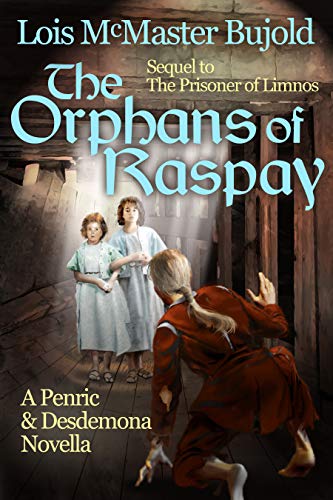 The Orphans of Raspay (Penric and Desdemona, #8) by Lois McMaster Bujold
The Orphans of Raspay (Penric and Desdemona, #8) by Lois McMaster Bujold Format: ebook
Source: purchased from Amazon
Formats available: hardcover, ebook
Genres: fantasy
Series: Penric and Desdemona #8, World of the Five Gods #3.7
Pages: 224
Published by Spectrum Literary Agency, Subterranean Press on July 17th 2019
Purchasing Info: Author's Website, Publisher's Website, Amazon, Barnes & Noble, Bookshop.org
Goodreads
When the ship in which they are traveling is captured by Carpagamon island raiders, Temple sorcerer Penric and his resident demon Desdemona find their life complicated by two young orphans, Lencia and Seuka Corva, far from home and searching for their missing father. Pen and Des will need all their combined talents of mind and magic to unravel the mysteries of the sisters and escape from the pirate stronghold.
This novella follows about a year after the events of “The Prisoner of Limnos”.
My Review:
There’s ransom – and then there’s anti-ransom paid to make sure that Penric, Learned Divine of the White God, goes away and stays away.
That’s a tiny piece of the end of the story. In the beginning, there’s chaos. In the middle, too. But then again, there’s always chaos in Penric’s life, and has been since the day that he stopped to help a dying woman by the side of the road, and ended up gifted with her demon and her calling.
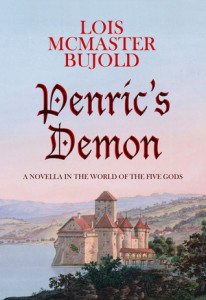 (That story is in Penric’s Demon, and it, just like all the stories in this series, is a delight.)
(That story is in Penric’s Demon, and it, just like all the stories in this series, is a delight.)
Because Penric’s god is the Lord Bastard, the “master of all disasters out of season” Penric himself is something of a chaos magnet. Wherever he goes, trouble happens. Usually to him, but eventually to everyone around him, while he emerges, if not unscathed, at least less damaged than whoever or whatever tried to get in his – and his master’s – way.
Penric serves as a bit of a secret agent for both the Duke of Orbas, where he lives when he’s not out running semi-secret errands as well as the Bishop of Orbas, who often sends Penric out on equally dangerous missions. He’s on his way home from one of those missions when the ship he is travelling on is blown off course in a storm, only to survive the storm and get captured by pirates.
That’s where Penric’s “adventure” really begins. Like most of Penric’s adventures, it’s the sort of thing where he’d like it to be a tale told by someone else while he sits beside his wife, safe at home. Or something he’d like to long be over, so that he can look back on it much more fondly than the experience warrants as it’s happening.
Instead, Penric leaps out of the frying pan into the fire – or at least there would be a fire if he weren’t locked in the hold of a ship in the middle of the ocean. And there certainly will be a fire as soon as he reaches dry land – or something equally chaotic and destructive.
After all, he owes those pirates a good comeuppance – even if they quite literally drop him into the mission that the Lord Bastard intends for him to accomplish.
Penric is there to rescue two little girls from slavery – along with himself. Her mother seems to have made a deal with his god, and it’s up to him to carry out his Lord’s side of the bargain.
If he can manage to wreak chaos on the entire slaving operation while he’s there – so much the better. Both his god and his demon ADORE chaos.
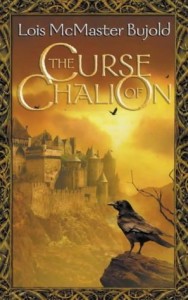 Escape Rating A: This series has been a comfort read for me, and right now we all need more comfort reading than usual, so here we are. I have kind of a hit-or-miss relationship with this author’s classic, famous space-opera Vorkosigan series, but I adored the World of the Five Gods series (begin with The Curse of Chalion) and was sorry to see it end. Then it un-ended with Penric’s Demon, which is set in the same world but doesn’t feature any of the original characters. Penric is definitely a character onto himself. And I don’t think you have to have read the “big” series to get into Penric if you start from his beginning in Penric’s Demon. (The series won the very first Hugo Award for Best Series in 2018!)
Escape Rating A: This series has been a comfort read for me, and right now we all need more comfort reading than usual, so here we are. I have kind of a hit-or-miss relationship with this author’s classic, famous space-opera Vorkosigan series, but I adored the World of the Five Gods series (begin with The Curse of Chalion) and was sorry to see it end. Then it un-ended with Penric’s Demon, which is set in the same world but doesn’t feature any of the original characters. Penric is definitely a character onto himself. And I don’t think you have to have read the “big” series to get into Penric if you start from his beginning in Penric’s Demon. (The series won the very first Hugo Award for Best Series in 2018!)
So I’m all in for this novella series. They are all novellas, so relatively short reads, always complete in themselves but with a “hook” to the wider Penric series. And lovely little bits of storytelling they are.
The success of the series rides – pun intended – on two characters, Learned Penric and his demon Desdemona. I’m not sure the possessive is in the right direction, much like the question about whether we own the cats or the cats own us.
Desdemona is kind of like a Trill symbiont from Star Trek. She’s the demon, she provides Penric with his magic. But she also contains the memories of every person that she has ever inhabited, and Penric has access to all those memories. He may be in charge, but Desdemona is a separate individual who has her own thoughts and her own relationships with the people around them. Lucky for Penric, Desdemona and his wife Niklys get along quite well. If they didn’t, he’d be the chew toy caught in the middle – although probably not for long.
Penric’s adventures often have a “Perils of Pauline” aspect, the out of the frying pan into the fire element of so many of those old melodrama serials. The difference is that in Penric’s case, he’s often the one providing the fire, as that’s one of the many gifts of his demon, and sometimes, as in this particular story, a place just needs a really good cleansing – with fire.
That’s certainly the case here, as Penric is caught in multiple dilemmas. He has to rescue himself and the two girls. He needs to figure out exactly what his responsibility is to those two girls. Not that he isn’t willing to save them, but if it’s a mission for his god he has different options than if he’s just doing a good deed. And there are WAY too many coincidences in their meeting for it to just be a good deed.
At the same time, he, and we, are morally outraged by the economy of the pirates haven and the slaving business that keeps it going. Not just the pirates themselves, but the entire network of middlemen and buyers who make the whole thing so incredibly lucrative – and so distributed that they are hard to eliminate in their entirety – no matter how much Penric wants to.
In spite of the terrible situation, the story itself has a gigantic element of fun to it. Penric causes chaos but he also experiences it fairly often. His plans to get himself and the girls off the island and on their way home backfires on him multiple times. People just won’t do the sensible thing when he’s involved. Seemingly ever.
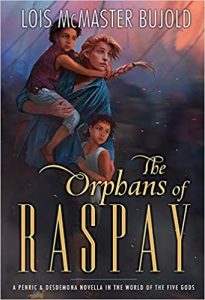 So he tries and fails regularly, although he tends to fail upwards, making a bit of progress each time. We hold our breath with him as he attempts yet another escape, and worry with him that he’s not going to get the girls to safety. Or that he’ll end up dead. Or both.
So he tries and fails regularly, although he tends to fail upwards, making a bit of progress each time. We hold our breath with him as he attempts yet another escape, and worry with him that he’s not going to get the girls to safety. Or that he’ll end up dead. Or both.
In the end, the cavalry quite literally comes over the hill – or at least over the horizon, and Penric lives to cause chaos another day. A day that I can’t wait to read about!
Reviewer’s Note: This book is currently available in ebook published by Spectrum Literary Agency. The print version will be published in June by Subterranean Press with a new cover.

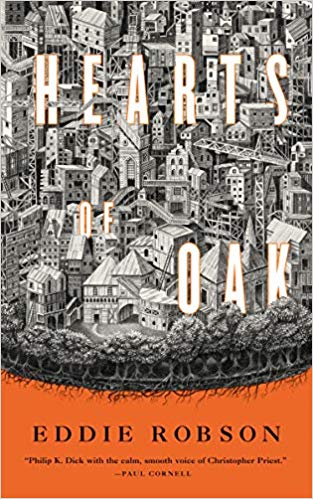 Hearts of Oak by
Hearts of Oak by 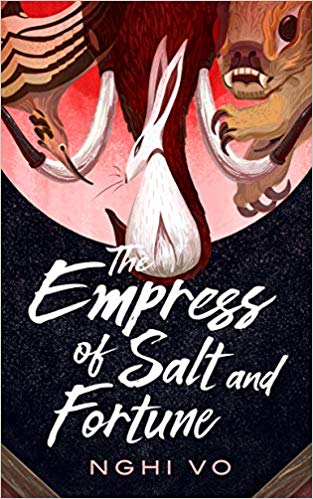 The Empress of Salt and Fortune (Singing Hills Cycle #1) by
The Empress of Salt and Fortune (Singing Hills Cycle #1) by 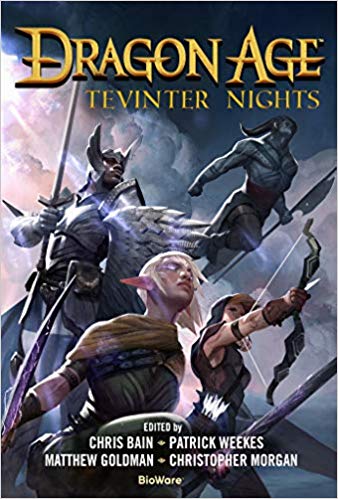 Dragon Age: Tevinter Nights by
Dragon Age: Tevinter Nights by 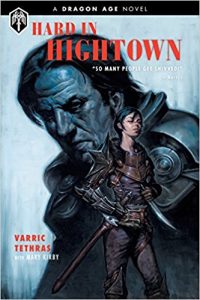 And the stories themselves, well, if you’re familiar with where they’re coming from, the collection is a rollicking good time. Maybe not all of the stories are quite worthy of a Tethras (
And the stories themselves, well, if you’re familiar with where they’re coming from, the collection is a rollicking good time. Maybe not all of the stories are quite worthy of a Tethras (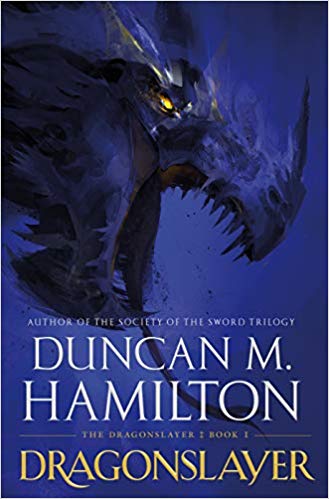 Dragonslayer by
Dragonslayer by 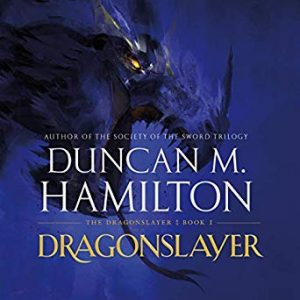 So when I bailed on an audio I just couldn’t tolerate, I remembered I had
So when I bailed on an audio I just couldn’t tolerate, I remembered I had 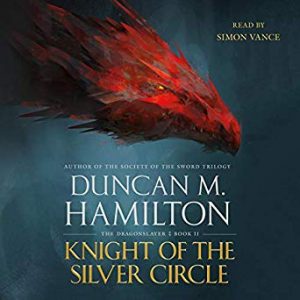 Last but not least, while this book was published in mid-2019 and probably finished sometime the previous year, finishing it today showed some striking parallels between the way that towns and villages were emptying out in hopes of getting away from the dragon and the response to the current COVID-19 pandemic in real life. In both cases, public spaces are empty and people are fearful. A virus is even harder to outrun than a flying, fire-breathing dragon.
Last but not least, while this book was published in mid-2019 and probably finished sometime the previous year, finishing it today showed some striking parallels between the way that towns and villages were emptying out in hopes of getting away from the dragon and the response to the current COVID-19 pandemic in real life. In both cases, public spaces are empty and people are fearful. A virus is even harder to outrun than a flying, fire-breathing dragon.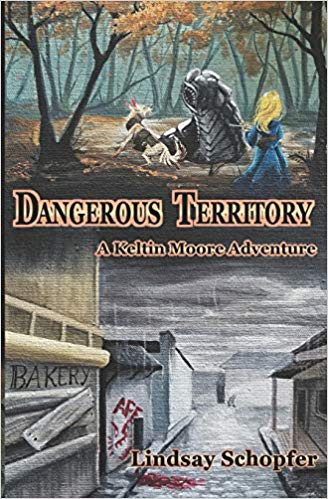 Dangerous Territory: A Keltin Moore Adventure by
Dangerous Territory: A Keltin Moore Adventure by 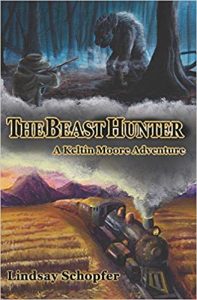 Three books in, after
Three books in, after 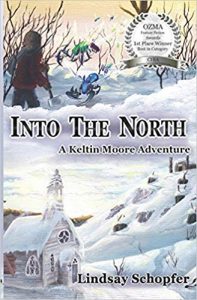 Escape Rating A-: There’s just something about this series that I eat up with a spoon. They are all relatively compact books, tell a compact story featuring an interesting and empathetic main character. I want to know what happens to Keltin next and I’m really sorry there’s no fourth book immediately available.
Escape Rating A-: There’s just something about this series that I eat up with a spoon. They are all relatively compact books, tell a compact story featuring an interesting and empathetic main character. I want to know what happens to Keltin next and I’m really sorry there’s no fourth book immediately available.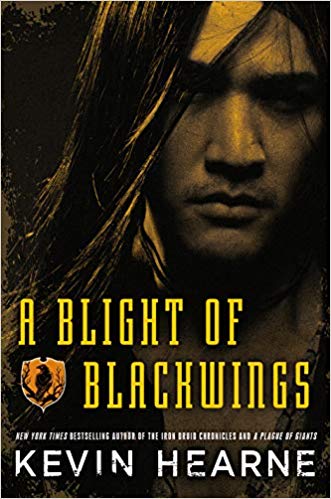 A Blight of Blackwings (Seven Kennings, #2) by
A Blight of Blackwings (Seven Kennings, #2) by 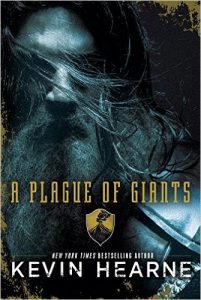 Just as in the first book in the series, the extremely awesome and utterly marvelous
Just as in the first book in the series, the extremely awesome and utterly marvelous 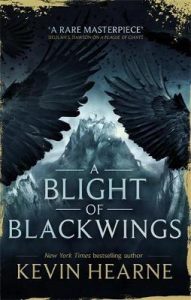
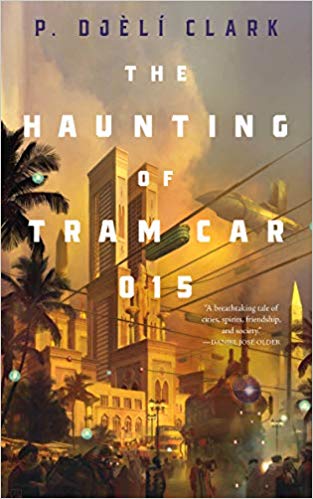 The Haunting of Tram Car 015 by
The Haunting of Tram Car 015 by 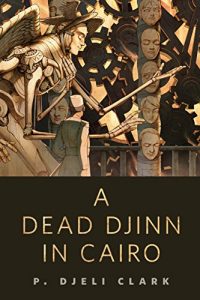 We only get hints of what the djinn are capable of in this story (I hope there’s more in the author’s previous work,
We only get hints of what the djinn are capable of in this story (I hope there’s more in the author’s previous work, 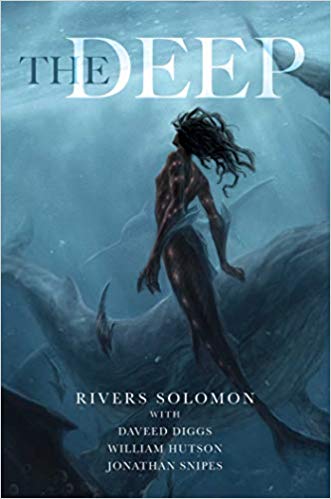 The Deep by
The Deep by 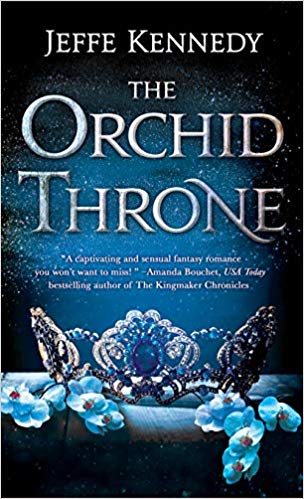 The Orchid Throne (Forgotten Empires, #1) by
The Orchid Throne (Forgotten Empires, #1) by 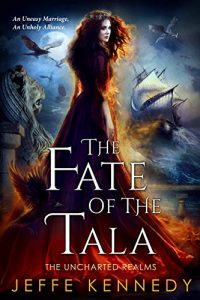 A couple of weeks ago I finished
A couple of weeks ago I finished 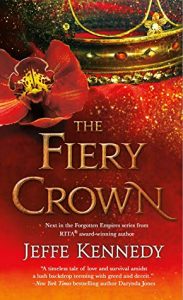 The one point where The Orchid Throne left me grasping at storytelling straws, just a bit, was in the character of its villain, Anure. That Anure is evil is unequivocally true. But why? And, for that matter, how? At the moment he’s like Supreme Leader Snoke in The Force Awakens. We don’t know where he came from or what motivates him into being the evil bastard he so obviously is. I hope his character picks up a little more nuance before he gets his much deserved comeuppance at the end of the series.
The one point where The Orchid Throne left me grasping at storytelling straws, just a bit, was in the character of its villain, Anure. That Anure is evil is unequivocally true. But why? And, for that matter, how? At the moment he’s like Supreme Leader Snoke in The Force Awakens. We don’t know where he came from or what motivates him into being the evil bastard he so obviously is. I hope his character picks up a little more nuance before he gets his much deserved comeuppance at the end of the series.